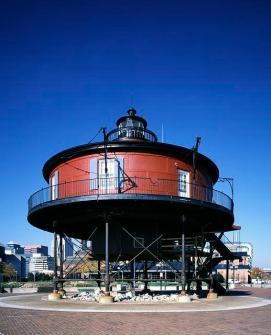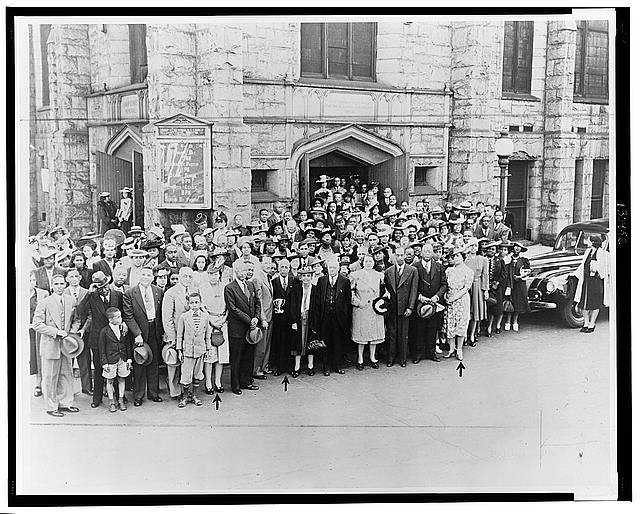The Metropole Bookshelf is an opportunity for authors of forthcoming or recently published books to let the UHA community know about their new work in the field.
By Matt Crenson
Matt Crenson. Baltimore: A Political History. Baltimore: Johns Hopkins Press, 2017
The idea of writing Baltimore’s political history came to me by accident – an accident for which I had been unconsciously preparing over decades. As an undergraduate at Johns Hopkins I wrote some term papers about neighborhood Democratic clubs. In the process, a local party bosslet – “Murph” – recruited me to serve as his driver and gofer during a local election campaign. We lost, but I learned something about the kind of politics that never gets on the evening news. Then I left for graduate school in Chicago, where I became acquainted with politics in the style of Mayor Daley the Elder. The six years that I spent living there and in Boston and Washington served to bring some of Baltimore’s peculiarities into focus. After coming home, I produced some op-eds and articles about bits and pieces of local history, and a whole book about Baltimore neighborhoods. It was based on a sample survey of local residents, not historical records, but my attention turned toward the ways in which neighborhoods served as containers of local history.

Then, sometime in 2010, a former political science graduate student at Johns Hopkins advanced an interesting proposal for a collection of essays that would follow the nation’s ten largest cities through successive periods of American history. Richardson Dilworth, now a Professor at Drexel University, conceived the project and invited me to contribute nine essays about Baltimore to Cities in American Political History. By the time I was done, I had much more material than I needed for the essays. It looked like the start of a book.
It was, but only a start. Finishing it required extensive work in the city archives and various manuscript collections. Fortunately, the Baltimore City Archives were located in a warehouse only minutes from my office, and its staff was supportive and generous with their time. I spent one or two days a week there for about five years.
My nine essays for Professor Dilworth’s project were based primarily on newspapers and secondary sources. The archives told a somewhat different story. The journalists and historians had concentrated on the development of the city – events and circumstances that changed Baltimore. In the archives, I also found evidence of change, but far more striking were the continuities that emerged.
 For example, Baltimore exhibited persistent symptoms of political underdevelopment. The city emerged almost a century after the first British colonists arrived in Maryland, and from its earliest days it operated under that shadow of an already entrenched political establishment in Annapolis, the colonial and current capital of Maryland. The tobacco planters who dominated the provincial assembly granted only narrowly defined powers to the government of Baltimore Town when it received its charter in 1729. The Town Commissioners had to appeal to the assembly to deal with local problems such as the swine that roamed and befouled the town’s unpaved streets. Over generations, the town operated under a relatively weak and disjointed political system heavily dependent on private, informal and improvised political arrangements to address local projects and problems. The state continues to limit city authority today. Baltimore’s police department, for example, is legally a state agency, though most of its costs are borne by the city.
For example, Baltimore exhibited persistent symptoms of political underdevelopment. The city emerged almost a century after the first British colonists arrived in Maryland, and from its earliest days it operated under that shadow of an already entrenched political establishment in Annapolis, the colonial and current capital of Maryland. The tobacco planters who dominated the provincial assembly granted only narrowly defined powers to the government of Baltimore Town when it received its charter in 1729. The Town Commissioners had to appeal to the assembly to deal with local problems such as the swine that roamed and befouled the town’s unpaved streets. Over generations, the town operated under a relatively weak and disjointed political system heavily dependent on private, informal and improvised political arrangements to address local projects and problems. The state continues to limit city authority today. Baltimore’s police department, for example, is legally a state agency, though most of its costs are borne by the city.
Then there are the neighborhoods that preserve fragments of the city’s history. By all accounts, there are at least 300 of them – far more than in any city of comparable size. Cities for millennia have been mechanisms of concentration, but the processes of concentration and centralization seem to operate less powerfully in Baltimore than in other towns; hence, the multitude of urban villages. Many of these miniscule neighborhoods also define the territories of drug gangs. Their struggles to challenge and defend so many boundaries may help to account for the city’s high homicide rate.
Baltimore’s political development may have been set back, not just by the authorities in Annapolis, but by its signature railroad, the Baltimore and Ohio. Its construction was a response to the completion of the Erie Canal, which undercut Baltimore’s geographic advantage as the westernmost port on the East Coast. Baltimore financed the railroad with borrowed money. As costs spiraled, interest payments became the single biggest item in the municipal budget, forcing the city to underfund almost everything from police to schools to sewers. The tight budget also restricted the supply of city patronage, inhibiting the building of a party machine with a powerful boss.

Baltimore’s struggle to pull itself together is one of two stories that unfold beside one another. The other is about race. White Baltimoreans displayed enduring ambivalence and avoidance of the issue as they skirted the color line. It’s the story that I discuss in my forthcoming blog post as part of The Metropole’s November Metropolis of the Month: Baltimore. The other side of the story, of course, has to do with the distinctive experience of the city’s African American population. In the days of slavery, Baltimore held the largest concentration of free black people in the United States. They created a distinctive community whose influence is still evident today.
![IMG_5816[1].JPG](https://themetropoleblog.files.wordpress.com/2018/10/img_58161.jpg?w=142&h=189) Matthew Crenson is a Professor Emeritus of Political Science at the Johns Hopkins University. He is a native Baltimorean who earned his undergraduate degree at Johns Hopkins and a Ph.D. in political science at the University of Chicago. In 1969 he joined the faculty at Johns Hopkins after teaching at M.I.T. and spending a year as a predoctoral fellow at the Brookings Institution in Washington. He has specialized in the study of American urban and national politics. At Hopkins, he a served as Chair of the Department of Political Science and Associate Dean and Acting Dean of the School of Arts and Sciences. Dr. Crenson is the author or co-author of eight books, including Baltimore: A Political History (Johns Hopkins University Press, (2017).
Matthew Crenson is a Professor Emeritus of Political Science at the Johns Hopkins University. He is a native Baltimorean who earned his undergraduate degree at Johns Hopkins and a Ph.D. in political science at the University of Chicago. In 1969 he joined the faculty at Johns Hopkins after teaching at M.I.T. and spending a year as a predoctoral fellow at the Brookings Institution in Washington. He has specialized in the study of American urban and national politics. At Hopkins, he a served as Chair of the Department of Political Science and Associate Dean and Acting Dean of the School of Arts and Sciences. Dr. Crenson is the author or co-author of eight books, including Baltimore: A Political History (Johns Hopkins University Press, (2017).
Featured image (at top): “A Bird’s Eye View of Baltimore“, by Edward W. Spofford, Norman T.A Munder, and Spofford & Hughes, 1912, Geography and Maps Division, Library of Congress



Hi… just thought you might be interested in what i did with that amazing map at the top of your post! https://pigtown-design.blogspot.com/2016/07/mapping-it-out.html
LikeLike
So cool! Thanks for sharing!
LikeLike